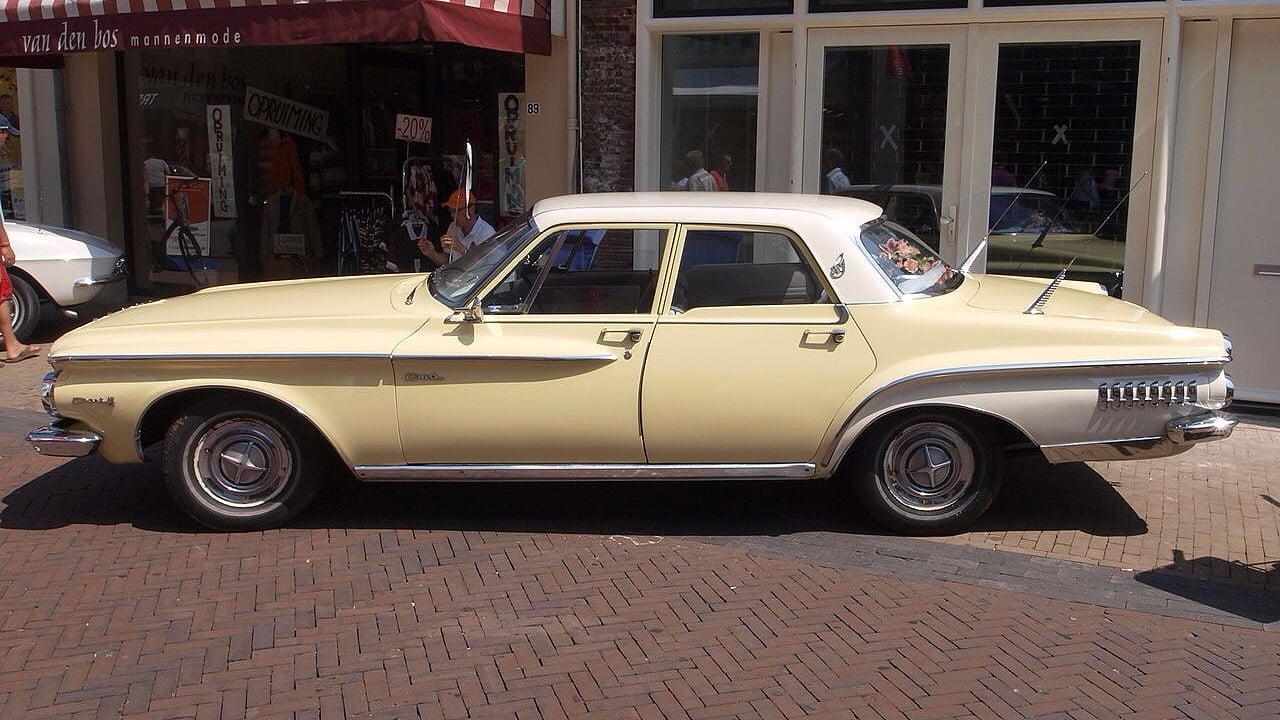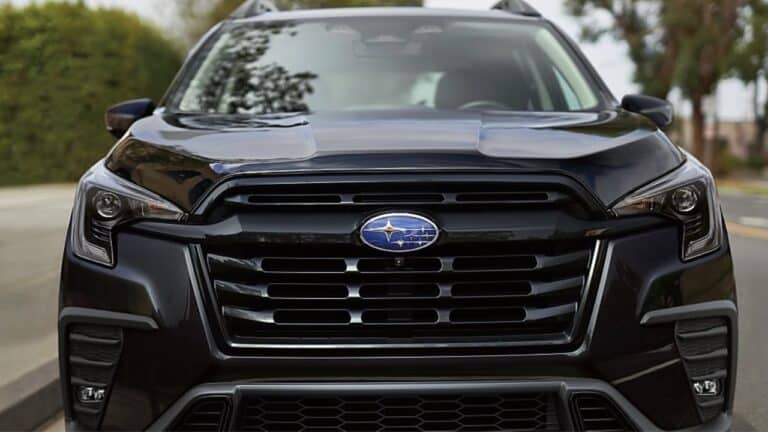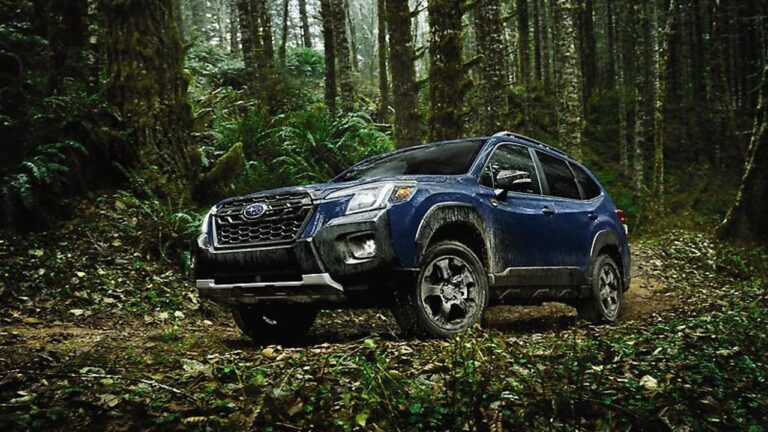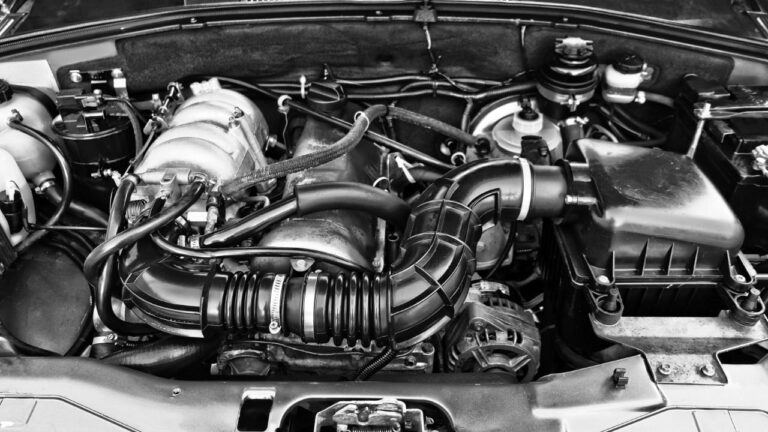13 Controversial Chrysler Cars

The emergence of the sedan body style at the dawn of the 20th century was a knee-jerk reaction to the growing popularity of automobiles, as automakers sought to make cars more comfortable and practical.
In fact, sedans were luxurious automobiles targeted at deep-pocketed customers at that time as they offered better protection from Mother Nature versus open-top cars.
Even though SUVs and crossovers have overtaken sedans in popularity, the latter remains bullish in the market, adapting and improving in weight reduction, efficiency, technology, and passenger comfort. However, some models throughout history didn’t quite live up to their raison d’etat.
The 13 on this list were criticized at various times for their build quality and comfort, although some have improved in recent years or discontinued.
Dodge Dart

The early 1960s were not the best times for Chrysler’s Dodge division, and the 1962 Dodge Dart contributed to the brand’s difficulties. The car’s odd proportions relative to its styling left it about as good-looking as Anung Un Rama, although some people who remember the car might argue that Hellboy is more handsome.
Unlike Hellboy with a tail in the right place, the 1962 Dart sat its tiny taillights just above the corners of the bumper. The 1963 Dart had many components only for that year, including its back glass, windshield trim, and a one-year firewall that would not easily accept a V8.
Fast forward to 2016, the Dodge Dart got serious knocks for a couple of missed marks, including a sluggish base engine, unrefined transmission (the Aero model’s A/T), oddly contoured and mounted too high front seats, and inhibited rear visibility due to thick rear pillars and a high trunk lid.
Chevrolet Aveo

Now in its second generation after hitting the market for the first time in 2002, the Chevrolet Aveo is one of the cheapest compact sedans on the market, but it also has a reputation for a cheap-feeling interior and overall build quality. Customers quickly realized they needed to cough up the cash for the loaded LT versions because they were more reliable than the base models.
Some owners also accused the car of barely keeping the noise out of the cabin but praised the user-friendly climate and audio controls. The geared manual transmission is a problem for highway merging and passing maneuvers.
Chrysler 200 (Early Models)

Chrysler restyled, re-engineered, and rebadged the Chrysler Sebring as the first-gen Chrysler 200, but some customers were not impressed with the interior. That’s despite Chrysler taking measures to minimize road noise, vibration, and harshness of the ride and updating the cabin with thicker seat cushioning and LED lighting.
The 2017 model lagged behind direct rivals in terms of interior space, and some owners reported critical reliability issues like random deployment of active head restraints, excessive oil consumption, and transmission failure. Although many owners admitted the car’s cabin is nice to spend time in, the 9-speed A/T shifter dial was said to take some getting used to.
Fiat Tipo/Egea

Considering the Tipo’s price tag, the interior deserves better. When drivers complained about the Fiat Tipo/Egea’s build quality, they were obviously comparing it to models like the Toyota Auris and Citroën C4. Skoda’s Octavia, for example, enjoys higher ratings than the Tipo, and the Nissan Pulsar offers better interior room.
No owner could deny the Tipo’s (Dodge Neon in Mexico and the Middle East) class-leading legroom and trunk space, but the interior material is a mixed bag. Cabin components like the column stalks and steering wheel switchgear are just so-so, while the shiny, unyielding interior door and center console mouldings were poor quality.
Ford Fiesta (Previous Generations)

The Fiesta’s interior had aged long before Ford discontinued the model for the US market in 2019. It is a popular compact car positioned as an affordable fun-to-drive hatchback, with sedan versions in some markets and model years. Despite its value proposition, earlier Fiesta models suffered from a cramped interior and less-than-stellar build quality.
It has always been a mixed bag, where the legroom, for example, is better than the Toyota Yaris but less than the highly versatile Honda Fit- a roomy front seat and cramped rear seat. The sedan has a good trunk volume, while the hatchback couldn’t match the trunk space of direct rivals.
Mitsubishi Mirage

The sedan variant of the Mirage, known as the G4, is no better than the popular hatchback noted for featuring a bland interior design and unimpressive ride quality. The ride is too firm for comfort, and the road noise threatens to rubbish the 3-cylinder’s impressive fuel economy. It has just as many hard plastics and tighter rear legroom as the hatchback, although it does come with Apple CarPlay and Android Auto.
While the Mirage is an affordable small car for city commuting, the interior is a good study in cost-cutting. Mitsubishi needs to learn a thing or two from the BYD Seagull and Yuan Up.
Nissan Versa (Older Models)

Older models of the Versa, specifically the 2008 model, were unashamed of their bare-bones interior because they were roomy and had better legroom than the Mitsubishi Mirage. However, the cabin noise at high rpm was nothing to be proud of, and neither was the uninspiring handling and braking performance.
The build quality was inconsistent throughout the car as Nissan compromised in some areas to keep costs down. The Versa has improved much from 2020 MY, with a wider-looking unit replacing the older models’ plasticky dash and the higher SV and SR trims sprucing things up inside the cabin with contrasting upholstery and vinyl-upholstered dash panels.
Even so, the Nissan Versa’s cabin is still a palace of hard plastic, although that’s not surprising for its low-cost segment.
Smart ForTwo

The Smart ForTwo Lcks too much in the interior and comfort even for a microcar. First of all, peace of mind is a hard place to find with the ForTwo’s pitiful range (2018 model) that has drivers in constant worry if they’re on the road for a minute too long. Indeed, the acceleration is reportedly fast and immediate, and we love how the car uses a smartphone as the primary infotainment screen.
It’s just sad that you can never enjoy the sanctuary of the ForTwo on long stretches due to the terrible range. The large rear blind spots (especially with the convertible) and subpar cabin materials don’t help its case. Some critics marked the steering wheel’s lack of tilt or telescoping adjustment as a significant loss while also knocking some purposeless storage cubbies in the car.
Suzuki Forenza/Reno

Before exiting the US market in 2012, Suzuki produced and offered the Forenza (also known as the Reno) from 2004 to 2008, and the nameplates were well received. For the 2008 MY, the Suzuki Forenza had its low price and spacious cabin as some of its selling points. It even had an estate version for enhanced practicality.
However, the Forenza wasn’t perfect. The quality of the cabin material was inconsistent throughout the poorly executed cabin compared to class leaders like the Corolla, Civic, and Nissan Sentra.
Indeed, the Forenza impressed with its plentiful rear legroom for adults and a 60/40-split-folding seatback but lost out with a below-average fuel economy, sloppy handling, and discouraging crash test scores. The automatic models also got knocked for their leisurely acceleration.
Hyundai Accent (Older Models)

For starters, older models of the Hyundai Accent, as recently as 2022, trailed way behind some rivals like the Chevrolet Sonic and Kia Rio in terms of trunk volume. The Hyundai offered 13.7 cu-ft trunk space versus the Chevy’s 14.9 cu-ft 919 cu-in with the hatchback) and the Kia’s 13.7 cu-in (or 17.4 cu-ft with the hatchback). Despite the low-rent materials, Hyundai managed to deliver a decent-looking cabin with user-friendly infotainment systems.
Kia Rio (Older Models)

Some Kia Rio earlier models had generally ‘okay’ interior qualities and functionality for the price. The 2006 model, for instance, came with many hard but nicely textured plastic trims that seemed to complement the fabrics of the seats and door panels. Some owners complained about the door handles and knobs breaking easily, though.
The abundance of hard plastics sort of matured with the car through the 2018 and 2019 model years. For 2021, the Rio seems to shed the last vestiges of pretentious sophistication to focus on functionality.
That’s to say that the Rio would’ve been solid if not for a few critical cabin issues, including a faulty fuel inlet nipple that produced a strong fuel scent in the cabin. It also suffered from frustrating door lock issues and electrical problems affecting the exterior and interior lighting.
Fiat 500

The Fiat 500’s unique style and historical significance have earned it unconditional friends for life in the US, but that didn’t stop owners and critics from calling out its shortcomings, including a few issues with the interior’s ergonomics and the overall ride quality. The 2012 model, for example, reportedly had problems with the power windows, seat adjustments, and sunroof.
The limited seating and steering wheel adjustability inadvertently compromised ride comfort for front and rear passengers, and the driver might feel the brunt of it due to the contouring of the front seat. Moreover, it recorded many complaints over suspension-related problems, such as worn bushings, noisy struts, and general suspension wear.
Renault Logan

The Renault Logan (sold in some markets as a Dacia brand) was criticized for its build and ride quality. Renault offered it as a budget-friendly sedan (also offered in estate and pickup configurations) replacement for the Dacia 1310 and Solenza.
Due to Logan’s ‘economy car’ price point, the cheap, shiny interior trims were understandable, but the interior missed the mark with some build quality issues, such as rattling sounds emanating from the belt holder to the steering wheel and poor quality wiper blades.





